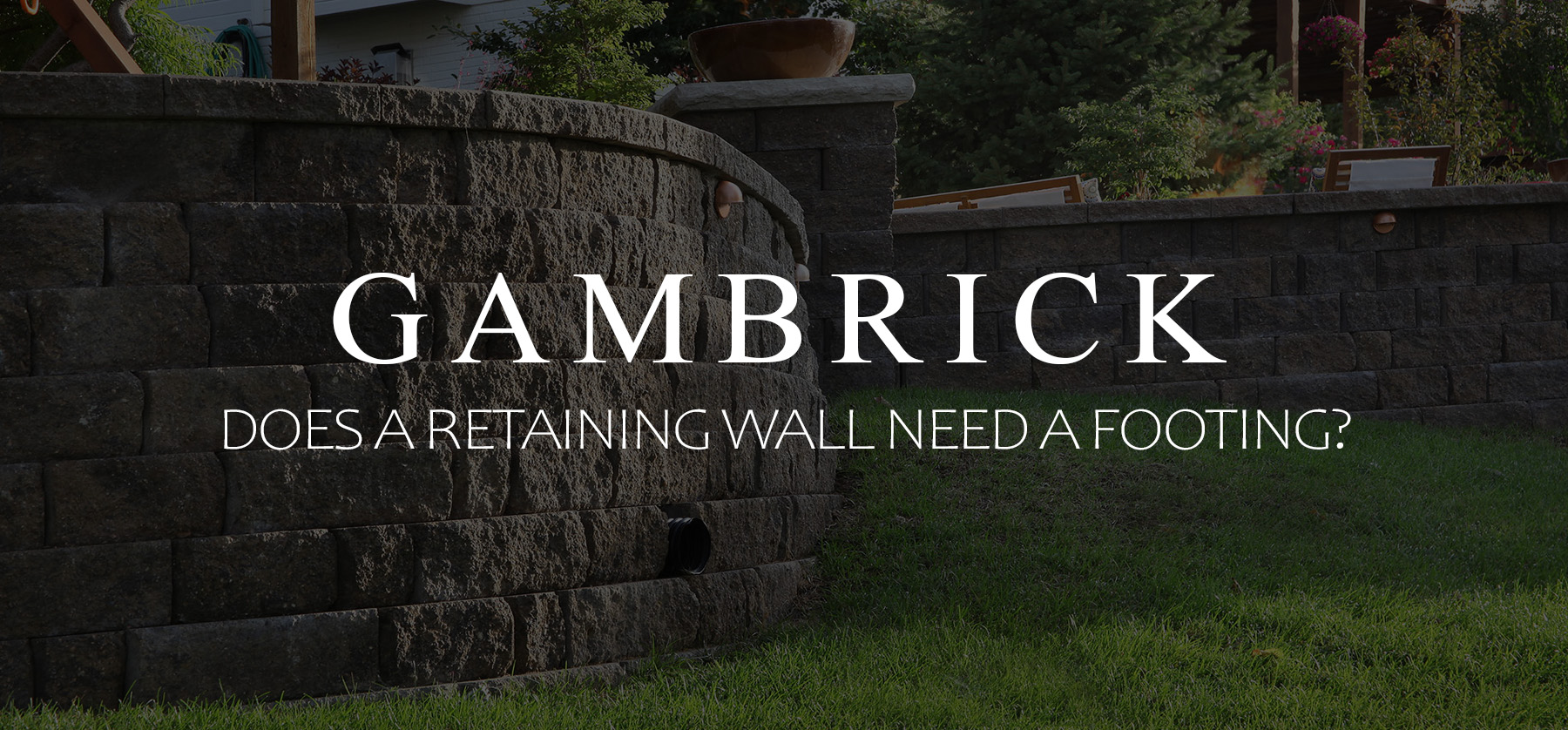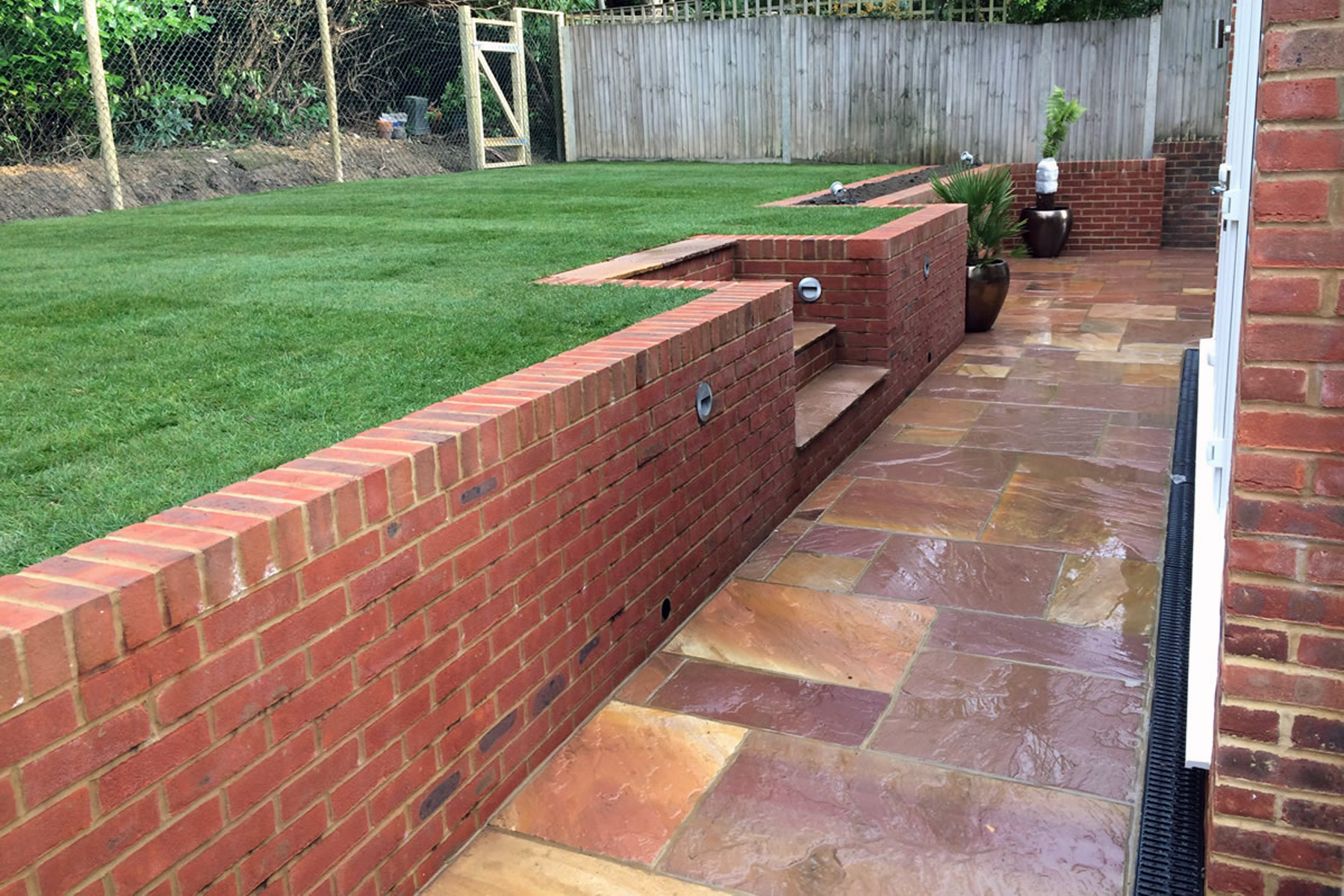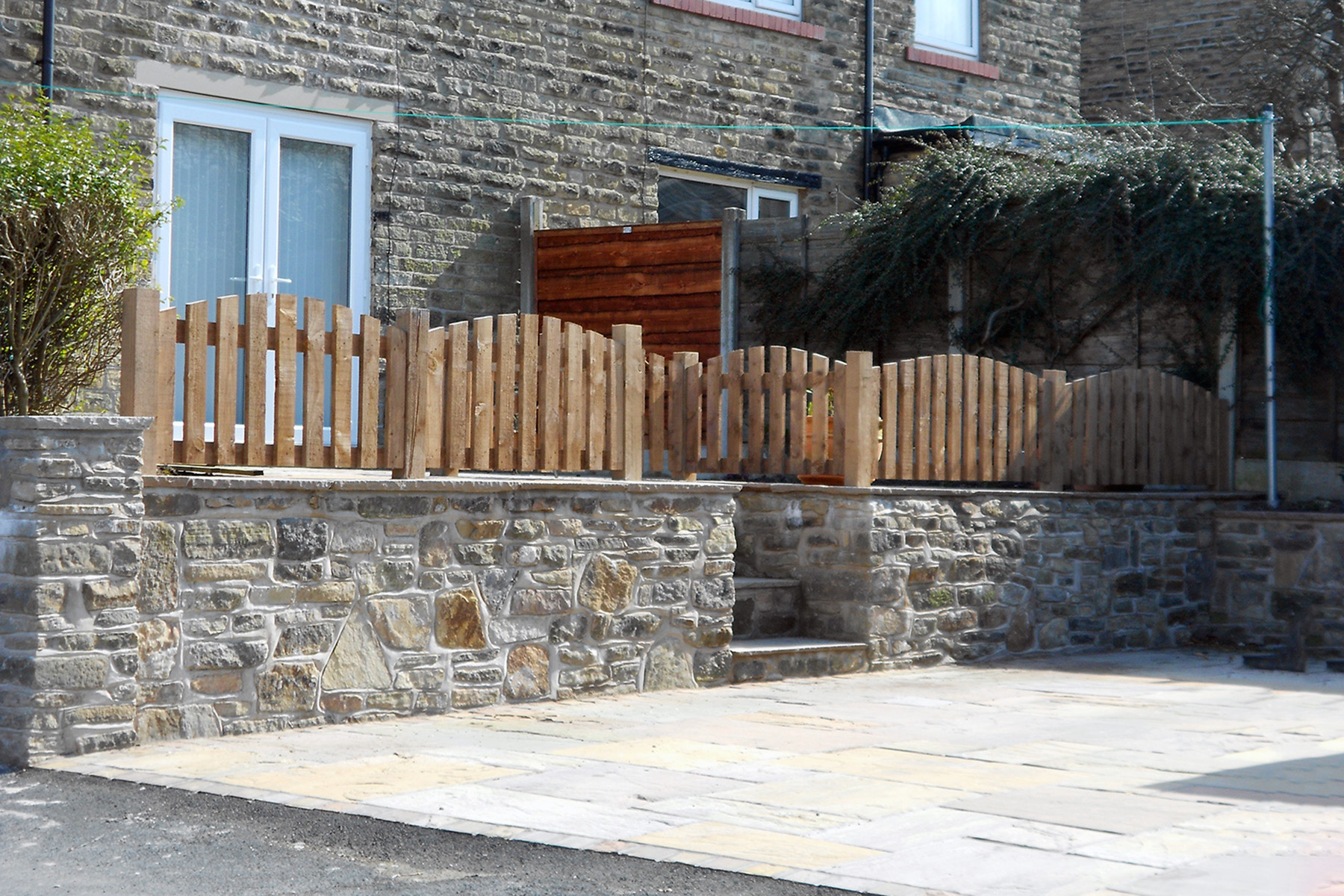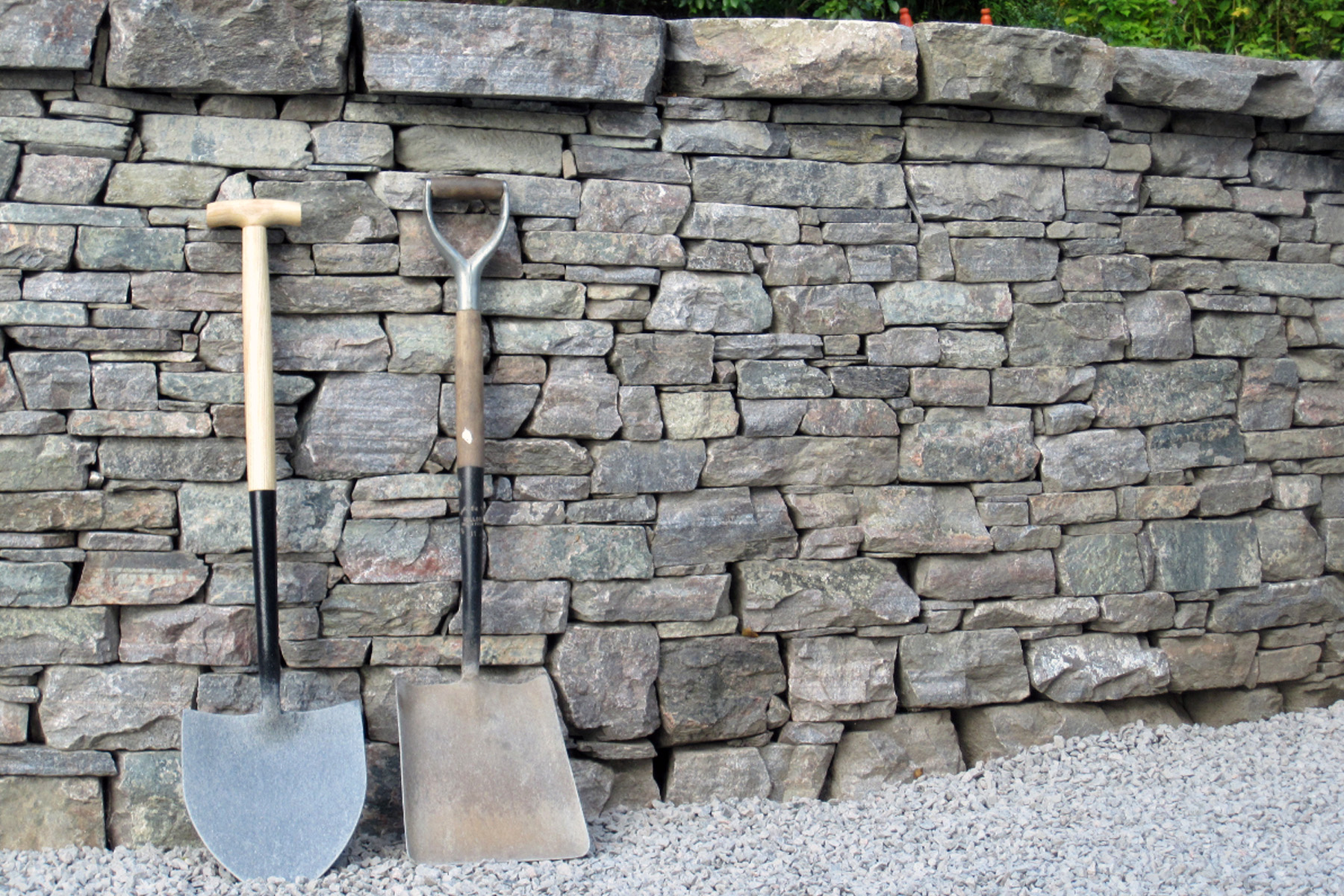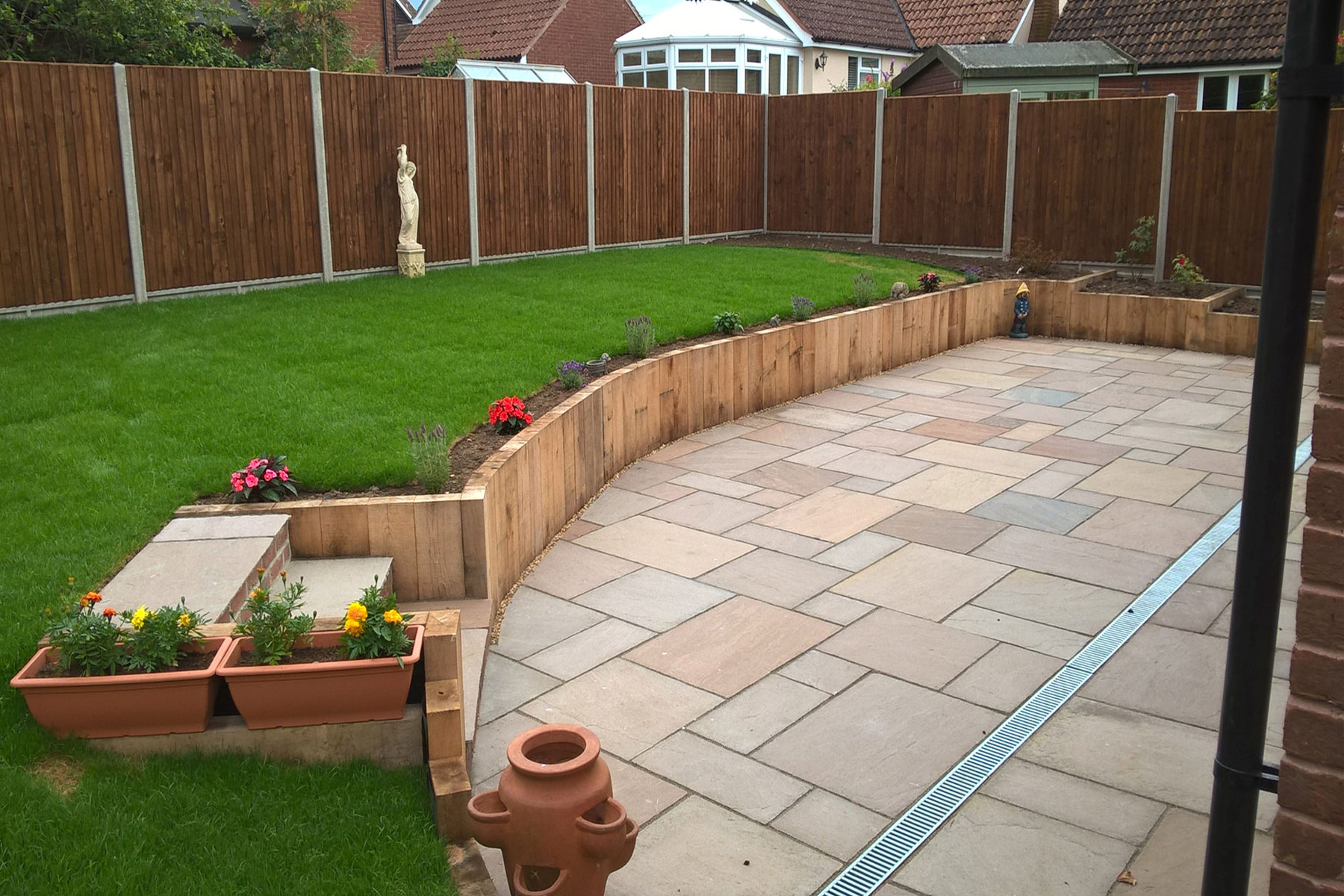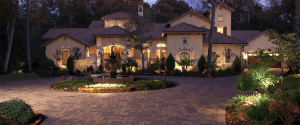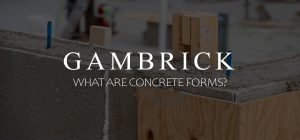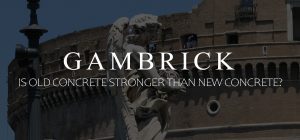Does A Retaining Wall Need A Footing?
Retaining walls are built to hold back, a.k.a retain, dirt that could collapse or erode without the wall. If your yard slopes down or has a steep incline then a retaining wall can make the ground level. The purpose of building a retaining wall is to create flat and level areas of Earth. They can be built on the side of a highway to hold back rock falls or in a garden to form a flower bed or terraced walkway. Retaining walls can also be paired with fences to make steep drops safer. They can be built out of wood or masonry materials like brick, paver blocks, stone or concrete. Every retaining wall needs a footing, but what type depends on the design, material, height and weight of the wall.
- Large masonry retaining walls built out of rigid materials like concrete, cinder blocks, cement or brick need a concrete footing. Solid masonry walls are stiff and unable to flex because they’ll crack. So they need a super strong and stable base to hold them together.
- Retaining walls built out of loose rocks, wood, stacked stones or brick without mortar, large stones or paver blocks require a compacted stone footing. These materials can flex a little because they’re not held together by mortar or concrete.
The key to building a strong and durable retaining wall is a stable footing and proper drainage. A retaining wall needs a footing because if the ground below it shifts, the wall will shirt too and possibly collapse. And they need drainage because water creates pressure under and behind the wall which can also collapse the wall.
In this article we’ll discuss retaining walls, their footings and how to build them safe and strong.
Retaining Wall Basics
The purpose of a retaining wall is to hold back soil. But they have a wide variety of uses. Some are built huge, capable of hold back entire hills from eroding. While others are very small and simple like a raised garden bed.
All retaining walls need some type of footing. But not all footings are the same. The material used to build the retaining wall, the wall’s height height, the amount of soil it retains, soil conditions, weather, water and where the wall is built all effect how the footing is designed.
Retaining walls have a wide variety of uses around the home. They’re commonly used to create sunken patios, planting beds, terracing, walkout basements, and to level off uneven ground. If your property is sloped and you want it flat, you’ll need a retaining wall.
You’ll also find retaining walls in many public places where they’re built as retainers for landscaping, statues, trees and stairs.
Retaining walls are also built on a very large scale to hold back hills on the side of a road or to create large flat areas of ground to build a shopping mall, school or building.
Retaining walls can be found just about everywhere you look and at a variety of scales. But no matter how big or small, they all perform the same basic function. They hold back Earth and rest on a footing.
The key to a long lasting retaining wall is drainage. Water creates pressure behind and under the wall which can cause a failure. To solve this, drainage is placed at the footing and directly behind the wall to divert water away from the wall.
If you build a DIY retaining wall at home, don’t forget to include drainage in your design.
Building A Retaining Wall
Simple DIY retaining walls under 3 foot high can usually be built at home without an engineer’s plan. However you still my need a permit. If you’re planning to build one, there are a few important factors you need to consider which includes the wall material, wall design, footing design, back-fill, and drainage.
Wall Material
The first thing you need to do when building a retaining wall at home is choosing the material. This is very important to do first because it influences a lot of the decisions you’ll make next. The wall and footing design for a red brick retaining wall is very different than if you’re using stacked paver blocks.
There are a variety of materials you can use to build a retaining wall. The most common include wood, stacked small stones, large stones, brick, concrete, cinder block and paver blocks.
Wall Design
Most retaining walls built with stacked materials are slope slightly backwards towards the earth that they’re retaining. This design is called step-back construction. By angling the all back against the lateral pressure of the soil behind it, you create a stronger more stable wall.
Step-back walls are very easy to build with retaining wall blocks. They already come with the correct angle built in so all you do is install them.
Some retaining walls require additional structural support to keep them from falling over when under pressure. These include vertical walls that don’t slope back as well as walls over 3 feet high. The extra support comes in a few different forms such as large concrete footings, steel reinforcement like rebar, cantilevered design, or tie backs that extend deep into the earth to anchors called dead men.
Some large retaining walls that hold back extreme amounts of weight or that are built on bad soil use multiple methods to help support the wall. The height of the wall, the material you use, soil conditions and the pressure of the earth behind it will help dictate which method of structural support the wall needs. These decisions are best left to a structural engineer and not something a homeowner should be involved in.
Another form of retaining wall is called a gravity wall. These large walls are so wide and heavy that its own weight is enough to hold back the soil behind it. They generally don’t require much additional support because they’re strong enough all on their own.
I don’t recommend a homeowner build a DIY retaining wall above 3 feet in height.
Retaining Wall Footings
All retaining walls should rest on some sort of footing.
The most common type of retaining wall footing is crushed compacted stone. When properly compacted, it’s very strong, won’t settle and provides some drainage. For a 3 foot high wall I generally use a compacted gravel footing 12″ to 16″ deep and 18″ to 3′ wide.
An excavated trench filled with gravel provides a stable foundation for a step-back retaining walls no ore than 3 feet high.
Gravel footings are great for retaining walls built out of stacked stones, large stones, wood and paver blocks. I usually set the depth of the footing at least a foot below grade which typically buries one course of paver block.
Larger walls, vertical retaining walls or walls built out of solid masonry require a concrete footing below the frost line.
A concrete footing remains completely stable so masonry blocks can be built on top. This creates a much stronger foundation similar to what’s found in most homes. Poured concrete, brick, cinder blocks and stone can all be permanently cemented to the footing.
The reasons why masonry walls need a concrete footing is because they’re very stiff. Any movement can potentially crack the wall an cause a failure.
To create a concrete footing, dig a trench deep enough so that the footing sits below the frost line. Shallow footings can move if moisture in the soil freezes and heaves. Concrete should be poured on top of compacted gravel at least a few inches thick. This provides some drainage.
I generally pour my concrete retaining wall footings at least 18″ to 24″ wide by 1 foot deep. But the right size should be determined by the material you use, soil and site conditions.
Drainage
Drainage is a very important part of retaining wall construction. The most common cause of retaining wall failure I see is due to poor drainage.
Water creates a lot of pressure behind and under the wall. This can cause shifting and swelling soil which can cause a retaining wall to crack, buckle and/or completely fail. I’ve seen entire retaining wall sections collapse or heave from water pressure that wasn’t properly drained.
Poor drainage is made even worse in cold climates. If water sits under or below the wall and freezes, it can heave the wall up, out or over.
There are two main areas that need drainage:
- Footing: The footing of your retaining wall needs drainage at its base. If water swells the soil under or around the footing it can cause a shift that then effects the wall.
- Wall: Drain pipes and drainage rocks should be placed directly behind the wall to carry water away. If water is allowed to collect behind the wall, it can swell the soil and push the wall over.
Stacked retaining walls don’t typically have drainage issues because water can drain out through the blocks. If water collects and swells behind the wall, some of that pressure can be relieved.
Solid retaining walls don’t allow water to drain through them so water issues are more serious. Pressure behind the wall due to water buildup can crack the wall and/or footing and possibly cause them to fail.
As walls grow taller, they become more susceptible to water damage. When a retaining wall is over 3 feet tall you really need to have good drainage.
I recommend using a footing and wall drain for retaining walls 3 feet and above. For low walls, I recommend at least a footing drain.
Backfill
When you build a retaining wall to hold back soil, the first thing you do is dig about a foot or two behind where you’ll be building the wall. This space provides enough room to build the footing and then work behind the wall.
Eventually you’ll install the footing drain and start back-filling up the wall. To back-fill simply means filling up the space directly behind the wall.
Retaining walls don’t get back-filled with the same soil you dug out in order to build it. Instead, you should use gravel behind the wall.
Dirt absorbs water and swells when wet puts pressure on the back of the wall. Gravel doesn’t absorb water or swell so it prevents pressure buildup against the wall.
Inside the back-fill gravel should be your drainage pipes. I recommend at least one perforated 4″ pipe at the base of your footing and at least one every 3 feet up the wall.
Back-fill behind the wall about 1 foot at a time as you compact the gravel. Don’t simply dump a bunch of gravel behind the wall without compacting it because it will eventually settle and cause a sinkhole at the top.
Stop back-filling with gravel about 6 inches to 1 foot from the top. The top layer of back-fill should be dirt so that you can landscape or plant grass in the area.
Retaining Wall Footings
In this section we’ll go through some common retailing wall materials and the type of footings they need to support the wall.
Red Brick Retaining Wall With Concrete Footings
A red brick retaining wall is solid masonry because the bricks are permanently joined together with mortar. They’re built vertical and not pitched back against the soil.
Brick retaining walls are built directly on top of a concrete footing and not gravel. It needs a strong, stable foundation to support the entire wall structure. If the footing heaves, shifts or settles, the wall could crack. This is why we don’t build brick walls on gravel.
I generally build my brick retaining walls on a 12″ to 18″ wide footing that’s at least 12″ thick. However this will vary based on factors such as soil conditions and the height of the wall.
Notice how the wall cuts back into the soil because of the built in stairs and planter bed. When a retaining wall is built like this it adds a lot of strength and stability to the wall.
Cinder Block Retaining Wall With Concrete Footing
Retaining walls built from cinder blocks are a solid masonry wall. The blocks are permanently joined together with mortar.
Cinder blocks are stacked vertically and do not angle back into the soil. They’re built on top of a solid concrete footing and not gravel.
This wall features a smooth cement finish and stone cap with built in stairs and planter beds.
Real Stone Retaining Wall With Concrete Footing
Retaining walls made out of real stone and mortar are built on a concrete footing. The mortar locks the stone wall together as one solid structure.
Stone retaining walls are generally built vertical so they need a strong foundation to help resist the pressure of the soil they retain.
Large Stone Retaining Wall With Gravel Footings
Large natural stones can be stacked to build a retaining wall. Because of their large size and weight, they’re great at retaining soil.
Large natural stones aren’t connected by mortar so there’s some room to shift. This type of retaining wall is built on a gravel footing and not solid concrete.
Medium Size Stacked Stone Retaining Wall With Gravel Footing
Medium size real stones can be stacked to build a retaining wall. These walls are hard to build because the stones have to be hand picked and fitting together one by one. There’s no pattern like there is with a stacked paver block.
Stacked stone retaining walls are built on a compacted gravel footing.
Stacked Paver Block Retaining Wall With Gravel Footing
Paver stones of different sizes can also be stacked to build a retaining wall. But unlike natural stone walls, wall blocks are installed in a pattern. This makes them much easier to build.
When I build stacked block walls I usually use masonry glue to hold the blocks together. This strengthens the wall but isn’t as stiff as cement joints.
Block retaining walls are built on a compacted gravel footing.
Stacked Paver Block Retaining Wall With Gravel Footing
Medium and large size retaining wall blocks are glued and stacked together to form the wall. Many manufacturers also include dowels that tie the blocks together. The combination of heavy stones, glue and dowels creates a stable and strong wall.
Notice how the wall pitches back against the soil it retains. This is a very strong design and great for retaining walls above 3 feet.
Stacked block retaining walls are built on a compacted gravel base.
Vertical Timber Retaining Wall With Gravel Footing
Retaining walls built with vertical timber has dead mean supports under the ground where you can’t see. Horizontal timbers run from the back of the wall to the dead men to stabilize and strengthen the wall.
Vertical timber walls are built on a compacted gravel footing.
Horizontal Timber Retaining Wall With Gravel Footings
Horizontal timber retaining walls are built in a few different ways.
Some builders drive support timber deep into the ground like pilings to support the wall. You could also drive down metal stakes. The timbers can then be secured into the support stakes.
The second way is to use dead mean behind the wall to anchor it in place.
Whichever method you choose, the wall is still built on a compacted gravel footing and not solid concrete.
How Much Does A DIY Retaining Wall Cost?
Retaining walls can be built out of concrete, stone, blocks, wood or bricks. But, if you’re looking to build a retaining wall yourself, retaining wall blocks are your best bet. They only cost around $1.00 to $5 per block, depending on their size and design, and they’re easy to install.
Most blocks are easy to stack together on top of one another. Once the compacted gravel footing is done, lay the first course totally level. As long as the first course is level, the rest of the blocks are super easy to install.
Glue each new coarse to the last with some masonry glue. Some wall systems also include dowels that lock the blocks together.
A small retaining wall up to 3 feet high costs an average of $5 to $10 per square foot if you build it yourself. Square footage of wall is measured on the face of the wall, not the footprint or in linear feet.
Larger retaining walls cost more because of the labor costs involved. A natural stone or brick retaining wall built by a mason can easily cost $20 to $50 per square foot. The more skilled labor that’s involved the more expensive the wall will be.
A poured concrete or block retaining retaining wall will cost $12 to $25 per square foot.
Expect to pay more for a concrete footing poured below the frost line. Compacted gravel footings are much cheaper.
If you DIY a retaining wall don’t forget to include drainage.
If you plan to build a retaining wall, check with your local building department first because you may have to file a building or zoning permit. Large walls over 3 feet high may also require an engineers plan.
Tips for DIY Retaining Walls
If you plan on building your own DIY retaining wall, here are a few tips:
- If you’re a beginner, wall blocks are the cheapest and easiest option. As long as the gravel footing and 1st course are level, you really can’t go wrong.
- When I build a retaining wall using blocks, I always bury at least one course of block. This keep the wall locked into the soil and makes it much stronger. Make sure to always bury a full block. If you only bury half a block the bottom of your wall will look strange.
- Check with the manufacturer first to be sure, but I almost always glue the blocks together as I stack.
- Don’t forget the drainage. It’s super important if you want your retaining wall to last. I recommend at least 1 drain pipe at the footing and 1 every 3 feet up the wall.
- When in doubt, consult with an engineer. Many wall block manufacturers have an engineer on staff that can answer questions for you.
- Make sure you compact the gravel footing. If you build the wall on loose gravel the footing can settle and damage the wall.
- Excavate a foot or two behind the wall to make work easier. Back-fill behind the wall with gravel and not dirt.
Summary: Do A Retaining Walls Need A Footing?
Retaining walls are built to hold back, a.k.a retain, dirt that could collapse or erode without the wall. If your yard slopes down or has a steep incline then a retaining wall can make the ground level. The purpose of building a retaining wall is to create flat and level areas of Earth. They can be built on the side of a highway to hold back rock falls or in a garden to form a flower bed or terraced walkway. Retaining walls can also be paired with fences to make steep drops safer. They can be built out of wood or masonry materials like brick, paver blocks, stone or concrete. Every retaining wall needs a footing, but what type depends on the design, material, height and weight of the wall.
- Large masonry retaining walls built out of rigid materials like concrete, cinder blocks, cement or brick need a concrete footing. Solid masonry walls are stiff and unable to flex because they’ll crack. So they need a super strong and stable base to hold them together.
- Retaining walls built out of loose rocks, wood, stacked stones or brick without mortar, large stones or paver blocks require a compacted stone footing. These materials can flex a little because they’re not held together by mortar or concrete.
The key to building a strong and durable retaining wall is a stable footing and proper drainage. A retaining wall needs a footing because if the ground below it shifts, the wall will shirt too and possibly collapse. And they need drainage because water creates pressure under and behind the wall which can also collapse the wall.
If you have any questions or comments about retaining walls, email any time.
